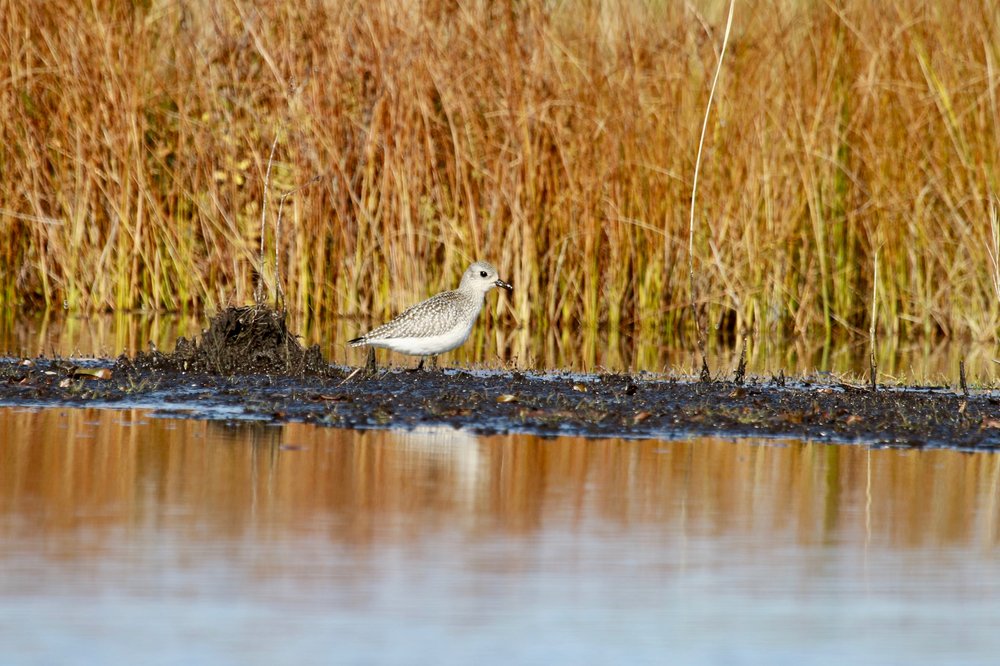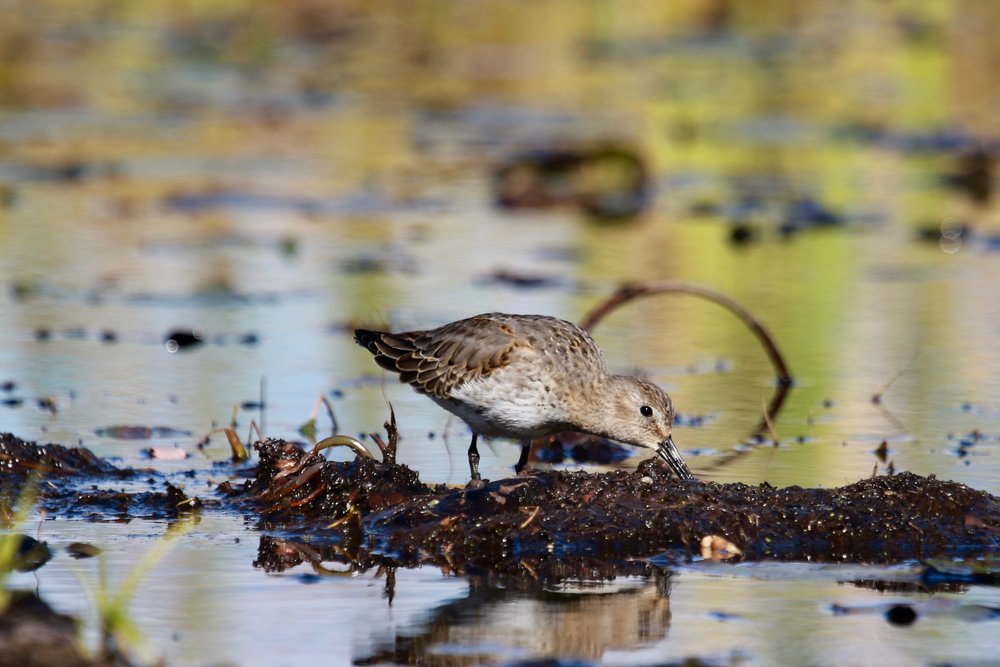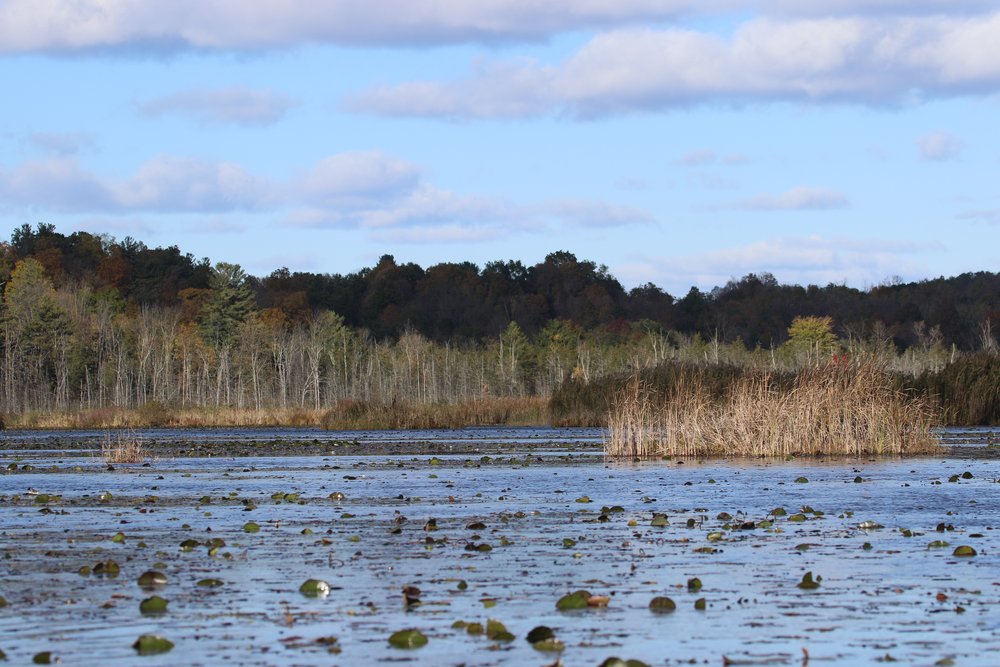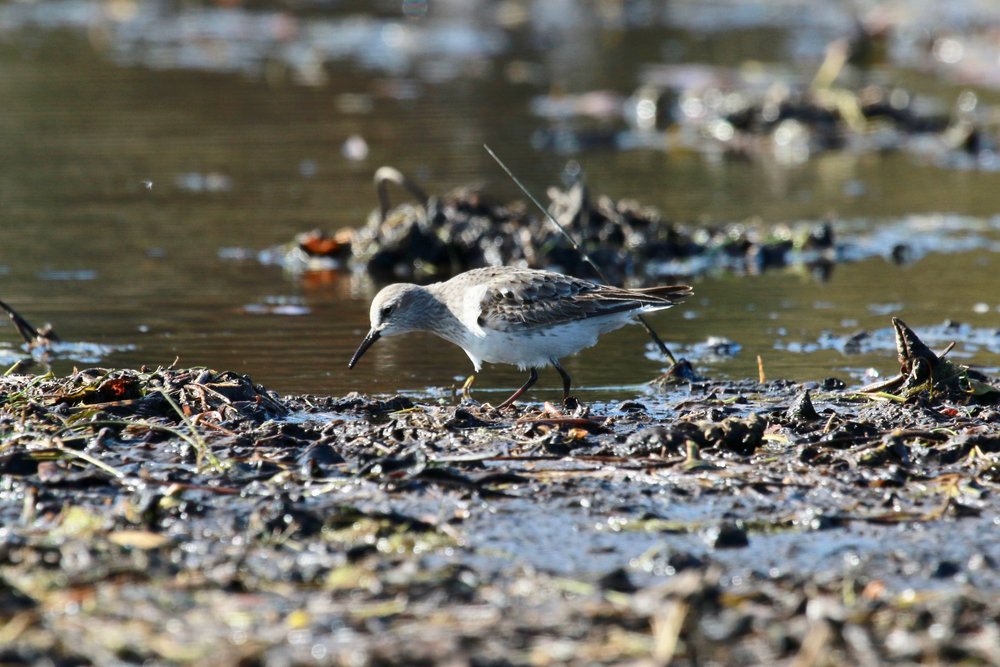Of all the fruits: cherries. Of all the months: October. Of all of the holidays: Thanksgiving. Of all of the birds: Rusty Blackbird. But--of all the groups of birds: shorebirds.


All birders have his or her favorite group or family of birds: the raptors in migration or the sparrows in a field. For many it’s easy: warblers in spring. For me, it’s shorebirds. Perhaps because I do associate them with water, the shore. Perhaps because I have spent so little time with them, the birds here in the Hudson Valley uncommon except in migration and even then there are few. Perhaps this group of birds retains a certain mystery because they are so elusive to me. And so when my friend Peter started reporting big numbers of shorebirds—a dozen Pectoral Sandpipers, a White-rumped Sandpiper, plus over forty Snipe at the Vly, a swamp in the northern edge of Ulster County, I had to go.
The wind funnels through the Vly like a natural wind tube, making paddling a challenging event. For the past few days white caps flecked the Hudson River and trees knocked back and forth, leaves in gold and red splashing to the ground. Peter explained that the Vly would be even rougher. Still: I wanted to go. Early in the day Peter texted “If you went out today we’d have to put you in an institution.” I laughed and hoped the wind would settle. It didn’t. The idea of paddling into that wind alone I could face, but I knew that the wind would make identifying the shorebirds that much more difficult, if not impossible. I didn’t want to attempt that alone. “Ok, let’s go, but be prepared,” Peter conceded.

Usually in fall the place you find Peter is in a field, searching for sparrows migrating south. His persistence pays off: every year he finds good sparrows. But this year he decided to focus as well on the Vly, a forgotten bit of swamp and woods where he and his wife recently bought a piece of land. Early in the season he saw good shorebirds, at first the usual then some amazing finds like a Stilt and a Bairds. After a lull a rush of birds once again. The birding community buzzed with excitement over his finds.

As I slid my kayak into the shallow muddy water, Peter pointed to the far shore where it looked like the land itself was moving. Birds! This is one of the great delights of shorebirds, the way they animate a seemingly empty landscape. The place was alive with birds, four Pectoral Sandpipers, a Dunlin and a Lesser Yellowlegs pulled worms and danced through the muddy flats. “If you take a few strokes, you’ll coast up on the flats and can get close,” Peter said. This too is one of the joys of shorebirds: they are often less skittish than other birds, so intent on a meal they trot in front of you, careless of danger.White-rumped Sandpiper
The sun rained down and white clouds scudded across the sky along with Crows on a mission. We pushed out of the sheltered cove where we had launched and through a patch of phragmites. On the other side: the wind tunnel. The wind plowed in broadside, knocking me in the face, freezing my hands that gripped too tight around the paddles I feared might sail off.
We both hunkered down, shoving out into the water, past muddy flats that emerged to ground my slim boat. I looked up to scan for birds from time to time, squinting into the sun that reflected off of the water, the water lilies turning brown. And thought: there’s no placed I’d rather be then there, pummeled by wind looking for shorebirds. “What we won’t do for love,” Peter called into the wind and I laughed: indeed.
Peter stopped paddling, his kayak skidding south with the wind as he put his binoculars to his eyes. “There!” Peter called, his face lit up, “A Black-bellied Plover!” A new bird in his long list of shorebirds found at the Vly. A bird never recorded before in this odd, special spot.
I found it hard to breath, whether from the wind or the excitement of the birds I couldn’t say. I tucked my paddle between belly and knee and wobbled my binoculars to my eyes. Sure enough, there was the plover, long necked with that petit black bill dancing around with his shorebird cohorts. The bird, unlike us, seemed unperturbed by the wind as it went about his plover business of finding food. Had this bird or other plovers ever before visited this lonely swamp on migration? Or was it that no one had before had been silly enough to venture out and lucky enough to see it?
This is what intrigues me about birding: for all we know about birds, and migration, for all the eyes and ears out in the field recording what we see, there is infinitely more that we don’t know. That is a good enough reason to go out and get knocked around by the wind.
“We’ll never know,” Peter said in answer to my questions.
But what I’m sure of is that every fall from here on out Peter will be combing first the fields for Sparrows, then the Vly for Shorebirds. And I will continue on my quest to get to know this group of sturdy un-shy birds with long legs that pepper mud flats and shorelines carrying out their secretive, magical lives.